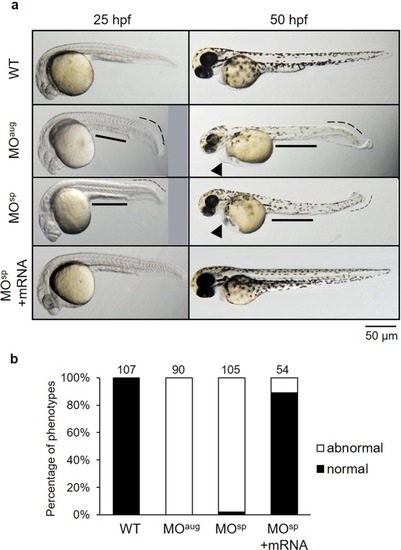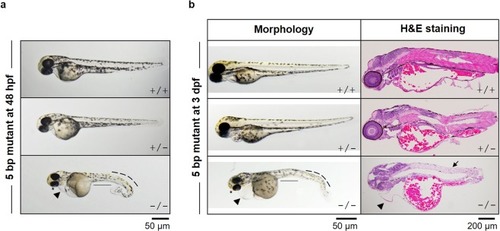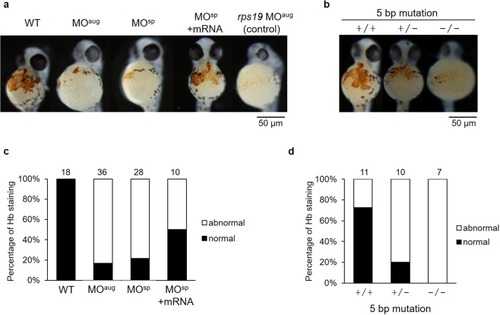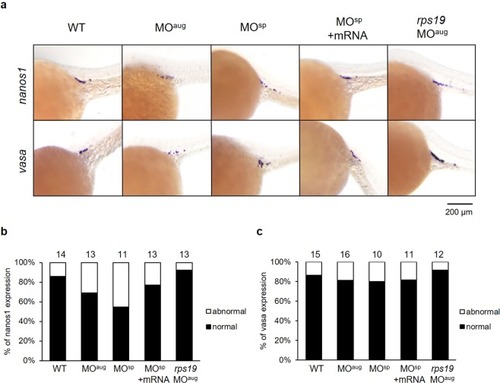- Title
-
Abnormal development of zebrafish after knockout and knockdown of ribosomal protein L10a
- Authors
- Palasin, K., Uechi, T., Yoshihama, M., Srisowanna, N., Choijookhuu, N., Hishikawa, Y., Kenmochi, N., Chotigeat, W.
- Source
- Full text @ Sci. Rep.

ZFIN is incorporating published figure images and captions as part of an ongoing project. Figures from some publications have not yet been curated, or are not available for display because of copyright restrictions. |

ZFIN is incorporating published figure images and captions as part of an ongoing project. Figures from some publications have not yet been curated, or are not available for display because of copyright restrictions. |
|
( |
|
( PHENOTYPE:
|
|
( PHENOTYPE:
|
|
( |

Unillustrated author statements PHENOTYPE:
|




